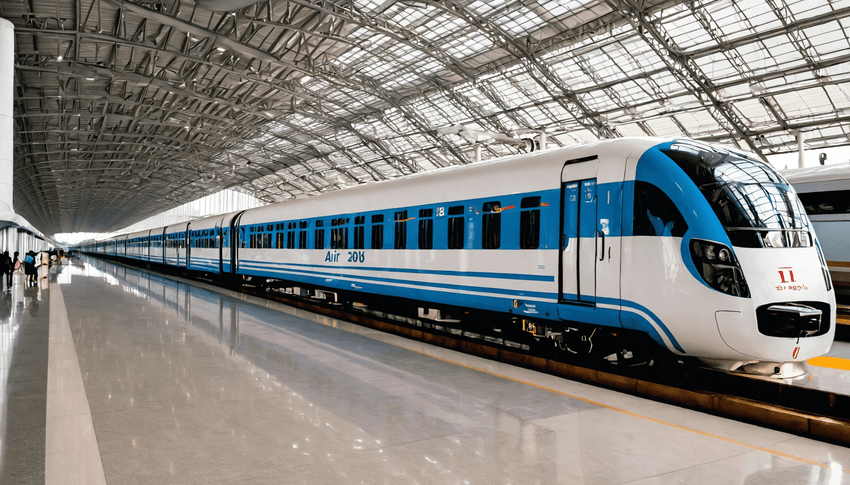India is all set to get its first-ever air train at Delhi airport by 2028. Indira Gandhi International Airport in Delhi will have an air train. An air train connects airports to existing rapid transport systems and city centres. This innovative system has the aim to reduce travel time within the airport by being more convenient for the passengers.
The Delhi International Airport Ltd (DIAL) has already issued a tender for the construction of an automated people mover (APM). As per the reports, this APM will be of 7.7km. It will have 4 stops including T2/3, T1, Aerocity and cargo city. The air train is going to connect Terminal 2 and 3 with Terminal 1, crossing runway 28. It will replace the current DTC bus service that is used for intra-airport travel.
This air train’s route of 5.7 km will be elevated and 2 km will be at the surface level. These surface level sections will be before Terminal 1 and under the elevated taxiway. A skywalk is also planned at the cargo station in order to connect the air train with the cargo terminal.
Average cost for construction in India is roughly around Rs 250 to 300 crore per km for elevated sections, Rs 150 to 200 crore per km for surface sections and Rs 500 to 600 crore per km for underground sections. This includes construction, trains, signals, electrical, and civil works.
The Indira Gandhi International Airport is one of the busiest airports in India. It serves more than 70 million passengers annually. As per the reports, the number of passengers is expected to double within next 6 to 7 years.
An air train also known as Sky Train operates through an Automated People Mover (APM) system. Its main purpose is to simplify the transfer process between terminals and benefit the passengers who are on connecting flights.
These trains are made to carry a high volume of passengers. They operating on a schedule in order to minimize wait times. Most of these systems run on an elevated track or a dedicated pathway in order to avoid traffic and enhance safety.
